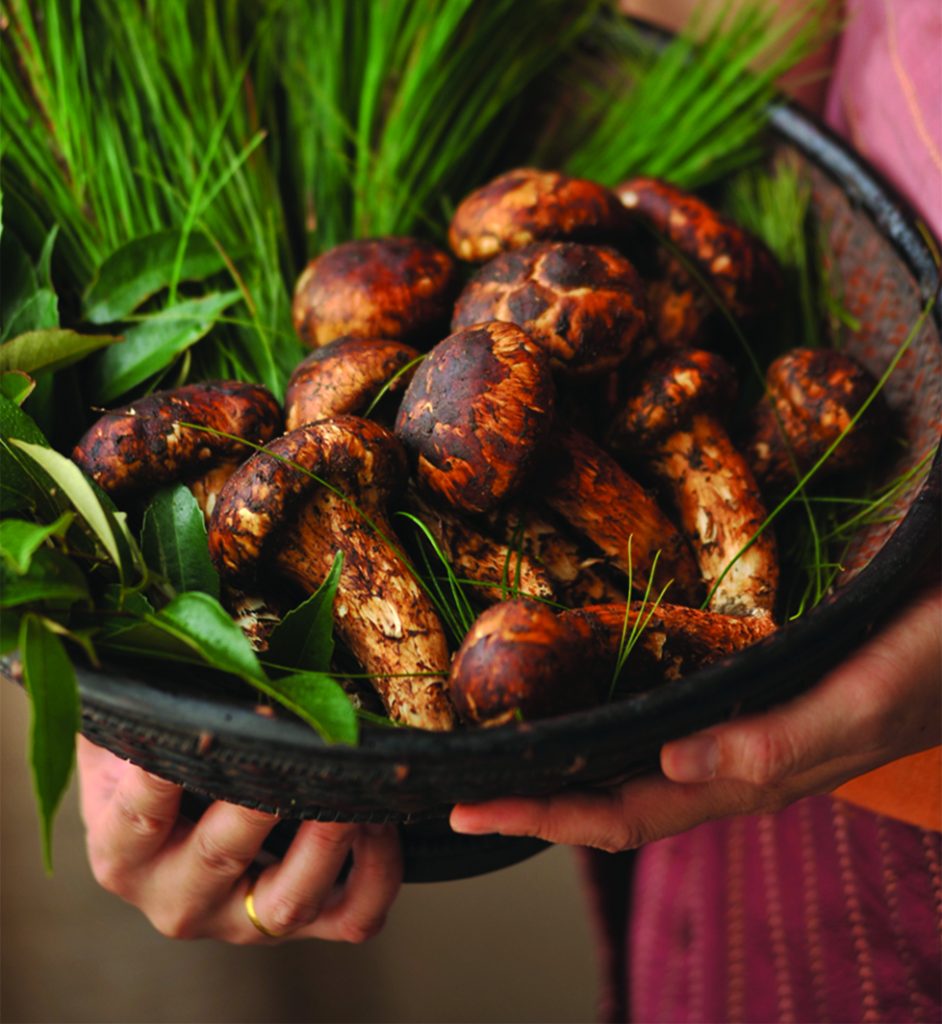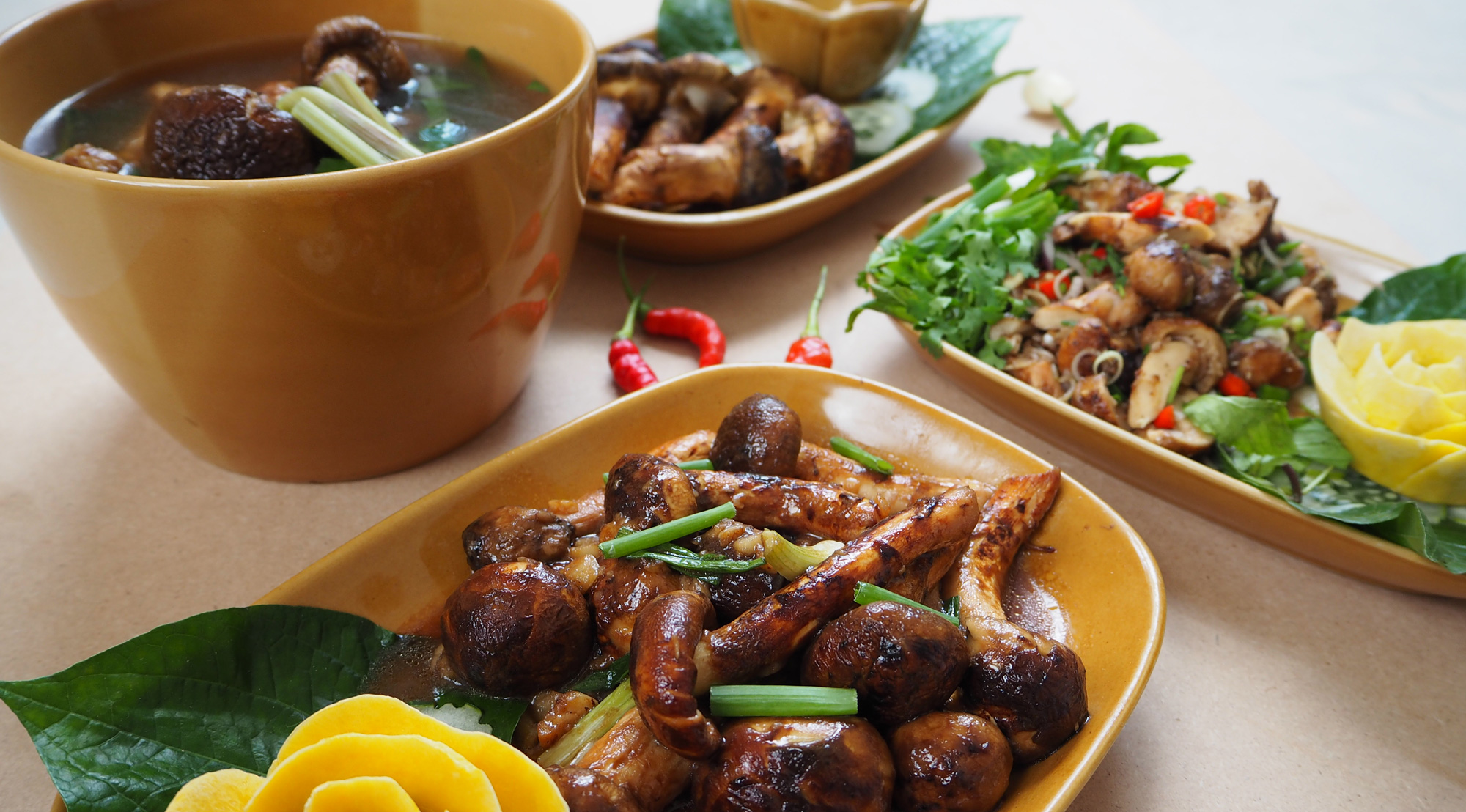ເມື່ອທ່ານໄດ້ຄົ້ນພົບຄວາມລັບລໍ້າຄ່າທີ່ ສະຖານທີ່ໃດໜຶ່ງ, ທ່ານຈະບໍ່ສາມາດໄປຈາກສະຖານທີ່ນັ້ນໄດ້ງ່າຍໆເລີຍ, ຄືກັນກັບເລື່ອງເລົ່າຂອງທະຫານຍີ່ປຸ່ນຄົນໜຶ່ງ. ຫຼັງຈາກສົງຄາມໂລກຄັ້ງ ທີ II ໄດ້ສິ້ນສຸດລົງ, ປະເທດຍີ່ປຸ່ນໄດ້ປະກາດ ເອກະລາດໃຫ້ແກ່ ອາຊີຕາເວັນອອກສຽງໃຕ້ ແຕ່ວ່າ ທະຫານຍີ່ປຸ່ນຄົນໜຶ່ງ ໄດ້ຕົກຄ້າງຢູ່ທີ່ແຂວງ ຊຽງຂວາງ, ແຕ່ບາງຄົນກໍ່ເລົ່າວ່າລາວເອງທີ່ສະໝັກໃຈ ບໍ່ກັບບ້ານເກີດກັບໝູ່ທະຫານຄົນອື່ນໆ ແລະ ດຳລົງ ຊີວິດຢູ່ ປະເທດລາວເປັນສິບໆປີ.
ຫຼາຍປີຕໍ່ມາລາວກັບໄປຢາມໝູ່ທະຫານທີ່ປະເທດ ຍີ່ປຸ່ນ ແລ້ວໝູ່ຂອງລາວຮູ້ສຶກແປກໃຈວ່າຊ່ວງເວລາ ຫຼາຍສິບປີທີ່ລາວອາໄສຢູ່ລາວ ມັນບໍ່ໄດ້ປ່ຽນແປງ ຮູບຮ່າງພາຍນອກຂອງລາວຫຼາຍ. ລາວຍັງແຂງແຮງ ແລະ ເບິ່ງອ່ອນກວ່າອາຍຸ. ໝູ່ຂອງລາວຖາມເຖິງຄວາມລັບ ທີ່ເຮັດໃຫ້ລາວສາມາດຄົງ ຄວາມແຂງແຮງໄດ້ຄື ໄວໜຸ່ມ, ລາວບອກວ່າຕອນຢູ່ຊຽງຂວາງ ລາວກິນເຫັດ ແປກ ຫຼື ທີ່ຄົນຍີ່ປຸ່ນເອີ້ນວ່າ ເຫັດມັດສຶຕາເກະເປັນປະຈຳ.
ເຫັດແປກ (ຫຼືບາງຄົນເອີ້ນວ່າ ເຫັດຫວາຍ ຍ້ອນມີ ຮູບຊົງຄ້າຍຄືຫວາຍ) ເປັນເຫັດທີ່ເກີດໂດຍທຳມະຊາດ ຢູ່ຕາມກ້ອງຕົ້ນແປກ. ເຫັດຊະນິດນີ້ຈະເກີດຫຼາຍຢູ່ ປະເທດຈີນ, ຍີ່ປຸ່ນ, ເກົາຫຼີ, ລາວ, ການາດາ, ແຟັງລັງ, ຊູແອັດ ແລະ ສະຫະລັດອາເມລິກາ. ໃນປະເທດ ຍີ່ປຸ່ນ, ເຫັດແປກ ຫຼື ມັດສຶຕາເກະຖືວ່າ ເປັນວັດຖຸດິບລ້ຳຄ່າ ທີ່ເພິ່ນຝານເປັນຕ່ອນບາງໆ ເພື່ອ ເພີ່ມກິ່ນຫອມໃຫ້ກັບອາຫານ, ບໍ່ແມ່ນເຫັດທີ່ໃຜກໍ່ໄປຫາເກັບໄດ້ຕາມກ້ອງຕົ້ນໄມ້.

ເລື່ອງເຫັດວິເສດນີ້ກາຍເປັນນິທານ ທີ່ເລົ່າຕໍ່ໆກັນມາ ໃນວົງອາຫານ. ເຖິງຢ່າງໃດກໍ່ຕາມສຳລັບຄົນ ຊຽງຂວາງ, ລວມເຖິງແມ່ມະໂນລາ, ເຈົ້າຂອງຮ້ານ ອາຫານ ຄົວລາວ, ເຫັດນີ້ຖືເປັນຄືເຫັດທົ່ວໄປ. ແມ່ມະໂນລາມີຄວາມມຸ່ງໝັ້ນ ໃນການນຳສະເໜີອາຫານລາວ ແລະ ເພິ່ນກໍບໍ່ພາດທີ່ຈະນໍາເອົາວັດຖຸດິບຈາກ ແຂວງບ້ານເກີດ ເຊິ່ງກໍຄືເຫັດແປກ ເຂົ້າມາເປັນອາຫານ ຈານໜຶ່ງໃນຮ້ານ ຂອງເພິ່ນເປັນຮ້ານທຳອິດ ກ່ອນທີ່ ເຫັດດັ່ງກ່າວຈະໄດ້ຮັບຄວາມນິຍົມ. ແຂກຕ່າງປະເທດ ທີ່ປະທັບໃຈໃນລົດຊາດອາຫານ ກໍ່ກັບໄປເລົ່າເລື່ອງ ແລະ ຂຽນຣີວິວໃນອິນເຕີເນັດ.
ທີມງານໂທລະທັດ ຂອງປະເທດຍີ່ປຸ່ນ ເຄີຍມາຖ່າຍທຳ ສາລະຄະດີແລະສຳພາດ ນັກທ່ອງທ່ຽວ ທີ່ພາກັນ ຮັບປະທານອາຫານຢູ່ໃນຮ້ານ. ນັກທ່ອງທ່ຽວຄົນໜຶ່ງໄດ້ກ່າວວ່າ “ຂ້ອຍຮູ້ສຶກວ່າຕົນເອງຄື ພະລາຊາເລີຍ ໄດ້ມີໂອກາດກິນເຫັດມັດສຶຕາເກະເຕັມໆຄໍາ ແບບນີ້”, ແລະ ກໍ່ຍັງເສີມຕື່ມວ່າ: “ໃນປະເທດຂອງຂ້ອຍ, ພວກຂ້ອຍໄດ້ກິນເຫັດມັດສຶຕາເກະເປັນແຜ່ນບາງໆ, ຫາກິນໄດ້ຍາກ ແຖມຍັງລາຄາແພງອີກ”.
ແຕ່ວ່າກ່ອນທີ່ທີມຖ່າຍທໍາຂອງຍີ່ປຸ່ນຈະມາ ຮ້ານອາຫານຄົວລາວ, ໄດ້ມີທີມນັກຄົ້ນຄວ້າຈາກປະເທດຍີ່ປຸ່ນມາກ່ອນແລ້ວ. ເຂົາເຈົ້າເຫັນຢູ່ອິນເຕີເນັດວ່າຮ້ານນີ້ມີ ເຫັດຫວາຍຂາຍ ຈຶ່ງໄດ້ຕິດຕໍ່ຫາ ແມ່ມະໂນລາເພື່ອພາໄປເບິ່ງແຫຼ່ງ ກຳເນີດຂອງເຫັດຊະນິດນີ້ ເຊິ່ງ ເປັນທີ່ຮູ້ກັນດີວ່າມີສັບພະຄຸນໃນການບໍາລຸງຮ່າງກາຍຫຼາຍ ຢ່າງ. ແມ່ມະໂນລາໄດ້ນໍາພາ ທີມນັກຄົ້ນຄວ້າໄປແຂວງ ຊຽງຂວາງ ແລະ ພວກເຂົາ ໄດ້ນໍາເອົາດິນບ່ອນທີ່ເຫັດ ຫວາຍເກີດກັບໄປປະເທດ ຍີ່ປຸ່ນເພື່ອຄົ້ນຄວ້າ. ຈາກການຄົ້ນຄວ້າ ແລະ ທົດລອງ ເຮັດໃຫ້ພວກເຂົາໄດ້ຮູ້ວ່າເຫັດແປກລາວ ແມ່ນເຫັດຊະນິດດຽວກັນກັບເຫັດມັດສຶຕາເກະທີ່ເກີດໃນປະເທດຍີ່ປຸ່ນ.
ປະຈຸບັັນ, ພໍ່ຄ້າແມ່ຂາຍຈາກປະເທດຈີນ ແລະ ຫວຽດນາມ ໄດ້ພາກັນໄປຍັງແຂວງຊຽງຂວາງເພື່ອ ກວາດຊື້ເຫັດແປກທີ່ມີຄຸນນະພາບສູງດ້ວຍຕົນເອງ. ນອກຈາກນັ້ນ, ເຫັດແປກຍັງມີຊື່ສຽງໃນການດອງ ໃສ່ເຫຼົ້າຂາວ, ທີ່ເອີ້ນວ່າເຫຼົ້າດອງເຫັດ ເຊິ່ງມີ ສັບພະຄຸນເປັນຢາຫຼາຍຢ່າງ. ບັນດາແຂກທີ່ມາທີ່ຮ້ານອາຫານໂດຍສະເພາະ ບັນດານັກທຸລະກິດ ກໍມັກສັ່ງເຫຼົ້າຊະນິດນີ້ ມາລ້ຽງແຂກ. ນອກຈາກນັ້ນ, ສະຖານທູດຍີ່ປຸ່ນກໍເລືອກຮ້ານອາຫານຄົວລາວ ເປັນບ່ອນຮັບຮອງແຂກພິເສດ ເມື່ອໄດ້ມີໂອກາດຕ້ອນຮັບເຈົ້າຊາຍ ແລະ ນາຍົກ ລັດຖະມົນຕີ ທັງສີ່ທ່ານທີ່ມາຢ້ຽມຢາມລາວ.
ເຮົາຈຶ່ງບໍ່ແປກໃຈເລີຍວ່າເປັນຫຍັງທະຫານຍີ່ປຸ່ນ ໃນນິທານຄົນນັ້ນຈຶ່ງອາໄສຢູ່ລາວເປັນເວລາຫຼາຍປິ, ຍ້ອນ ວ່າລາວບໍ່ຢາກລາຈາກສິ່ງມະຫັດສະຈັນທີ່ລາວໄດ້ ຄົ້ນພົບໃນດິນແດນລ້ານຊ້າງແຫ່ງນີ້.



 English
English
